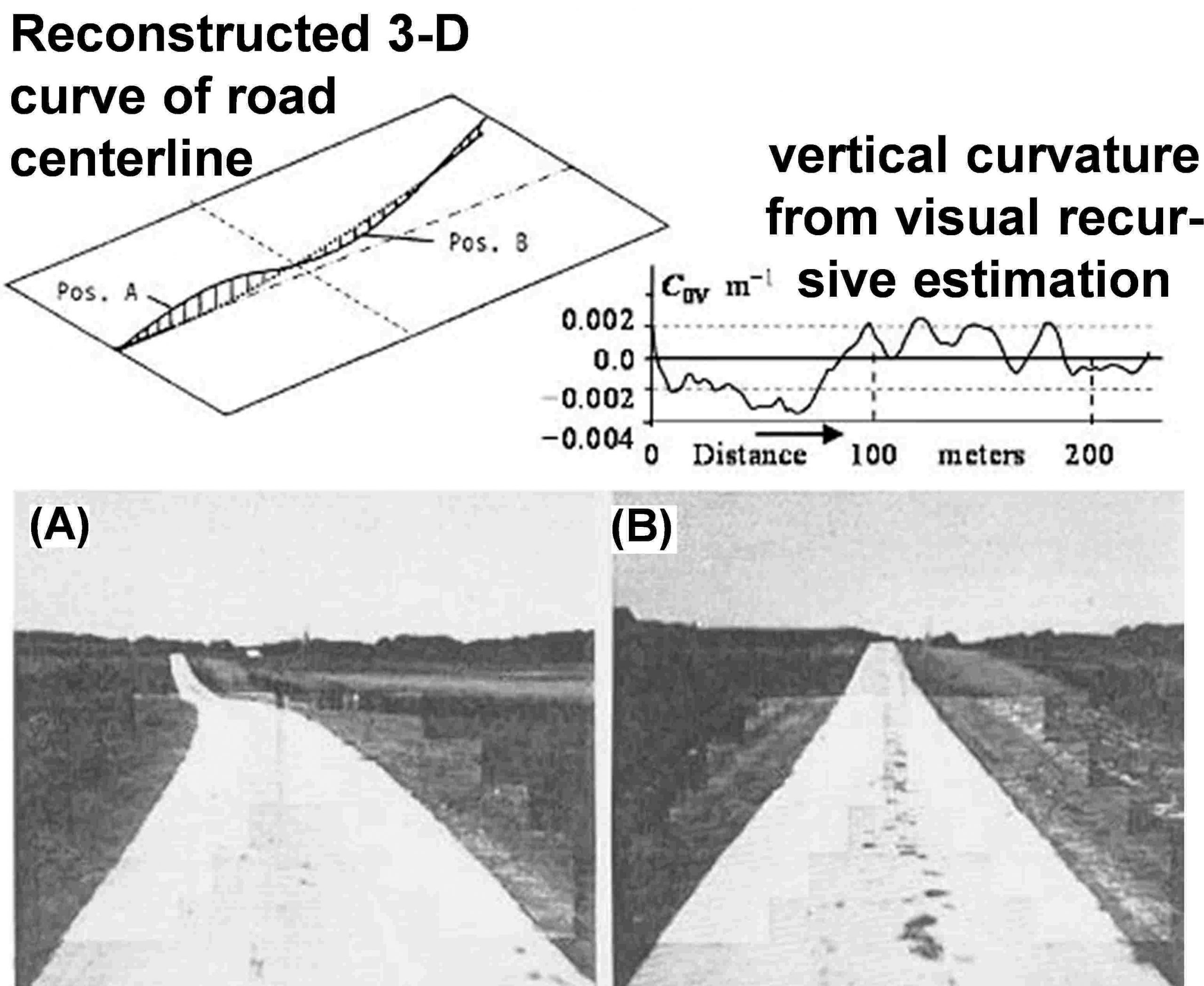Since the representation in the vertical plane is independent of the horizontal direction of the road, the two orthonormal models may be superimposed; as long as the cosine of the slope angle γ remains close to 1, only small errors will result. This is the case for |γ| ≤ 15° (corresponding to a road inclination of ~ 26%); this limit is very rarely exceeded.
The figure to the left shows the vertical curvature estimated (top right), and the curve in space above the horizontal curve (top left); the projection was computed from both curvatures estimated.
Video 1990 DissMy.mp4 (final part)
Stretch of Autobahn with very low vertical curvature
At long look-ahead distances even minor vertical curvatures have an appreciable effect on correct perception of the environment. It has been proven [Behringer 1996] that (bifocal) monocular motion stereo with the 4-D approach is capable of perceiving these situations much better than simple planar models without vertical curvature. The figure bottom right shows results from an underpass of the Autobahn A8 near Neubiberg under a road bridge with rather small local deviations from a plane. Vertical curvature over run length (lower right) is qualitatively correct as can be seen from the sequence of images; however, the accuracy is unknown since small variations in lane width affect the observability of the parameters involved.
References
Mysliwetz B (1990): Parallelrechner-basierte Bildfolgen-Interpretation zur autonomen Fahrzeugsteuerung. Dissertation, UniBwM / LRT. Kurzfassg
Behringer R (1996). Visuelle Erkennung und Interpretation des Fahrspurverlaufes durch Rechnersehen für ein autonomes Straßenfahrzeug. Dissertation, UniBwM / LRT. Kurzfassg
Dickmanns ED (2007). Dynamic Vision for Perception and Control of Motion. Springer-Verlag, (Section 9.2) Content

